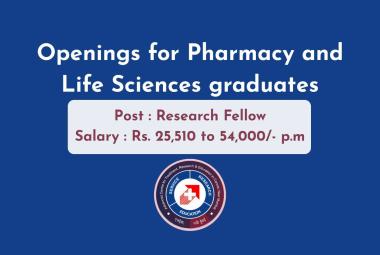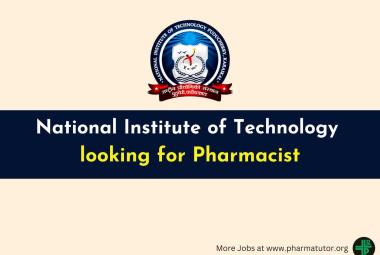In a randomized, multicenter study of advanced Parkinson's disease (PD) patients, those treated with deep brain stimulation (DBS) of the subthalamic nucleus combined with best medical therapy had better self-reported quality of life at 1 year than those treated with best medical therapy alone.
The surgery group reported greater improvement in mobility and activities of daily living after 1 year and required a third less daily dopaminergic drugs than the control group, according to an article published online in the April 29 issue of The Lancet.
[adsense:336x280:8701650588]
The differences noted were "clinically meaningful," the study team, with senior study author Keith Wheatley, DPhil, professor of medical statistics, Cancer Research UK Clinical Trials Unit, University of Birmingham, United Kingdom, concludes in the article, "but surgery is not without risk, and targeting of patients most likely to benefit might be warranted."
Self-Evaluation of Functional Status
The results are from the ongoing PD-SURG trial, a randomized, open-label trial.
The study involved 366 well-matched patients with advanced PD for whom current medical therapy was not providing adequate symptom control; 183 were randomly allocated to DBS plus best medical therapy (178 underwent DBS) and 183 to best medical therapy alone. In 174 of the surgery patients, the subthalamic nucleus was the surgical target and 176 procedures were bilateral.
Medical therapy could include apomorphine infusion according to local practice, other dopamine agonists, monoamine oxidase type B inhibitors, catechol-O-methyltransferase inhibitors, amantadine, or other drugs for PD symptoms.
The primary endpoint was the patients' self-evaluation of their functional status on the 39-item PD questionnaire (PDQ-39).
According to the investigators, the mean change from baseline to 1 year on the PDQ-39 summary index was −5.0 points in the surgery group and −0.3 point in the medical therapy group (difference, −4.7 points; 95% confidence interval [CI], −7.6 to −1.8; P = .01).
"The sample size for the trial was based on detecting a 10-point difference in the quality of life scale," Dr. Wheatley noted in an email to Medscape Neurology. "Of course, we would have liked a larger benefit, but the observed 5-point benefit is worthwhile for patients."
Significant differences favoring surgery were also seen in the mean change in the PDQ-39 score for mobility (−8.9; 95% CI, −13.8 to −4.0; P = .0004), activities of daily living (−12.4; 95% CI, −17.3 to −7.5; P < .0001), and bodily discomfort (−7.5; 95% CI, −12.6 to −2.4; P = .004). Between-group differences in all other domains of the PDQ-39 (eg, social support, cognition and communication) were not significant.
Verbal Fluency and Vocabulary
However, in an editorial published with the study, Maria C. Rodriguez-Oroz, MD, from University of Navarra in Pamplona, Spain, notes that a more detailed neuropsychological analysis of a subgroup of patients showed a decline in verbal fluency and vocabulary in the DBS group.
Still, at 1 year, patients who had the surgery were "better able to get about and perform their normal daily activities," Dr. Wheatley told Medscape Neurology, "and they needed a lot less medication than the patients in the medical therapy arm."
Patients in the surgery group were taking a mean levodopa equivalent dose of 894 mg/day (SD, 568 mg/day) at 1 year, whereas those in the medical group were on 1347 mg/day (SD, 585 mg/day; P < .0001), a difference of 453 mg/day (95% CI, 328 – 580), which represents a 34% reduction in mean daily dopaminergic drug requirement in the surgery group.
At baseline, 45 patients in each group were taking apomorphine. By 1 year, this had decreased to 13 in the surgery group and had increased to 63 in the medical therapy group.
The findings on the PDQ-39, the study team reports, "were mirrored by clinically meaningful differences on the United Parkinson's Disease Rating Scale (UPDRS), including the patient-rated UPDRS part IV, which showed substantial benefits of surgery in the time and severity of dyskinesia and off periods — the most common reasons for patients to be considered for surgery."
At 1 year, 75 patients in the surgery group vs 21 in the control group reported no waking day dyskinesia and 45 and 5, respectively, reported no off time (P < .0001 for both).
As expected, DBS was not without risk; 36 (19%) of 178 surgery patients had 43 surgery-related serious adverse events, most commonly infection. There was 1 unsuccessful suicide attempt after DBS in a patient who had a previous suicide attempt before the study. There was 1 surgery-related death due to hemorrhage.
Trial Differences, Advantages, Limitations
Dr. Rodriguez-Oroz says 3 aspects of this trial make it different from previous DBS trials in PD patients: "the trial includes a larger number of patients, has a longer follow-up, and permits treatment of patients in both groups with continuous infusion of apomorphine," which is increasingly being used for PD.
One major limitation of the trial, recognized by Dr. Rodriguez-Oroz and the study team, is that evaluators were not blinded to treatment allocation. Another, according to Dr. Rodriguez-Oroz, is that reports of improvements in dyskinesias and off periods were based on the UPDRS complications of therapy subsection rather than a "more reliable source," such as diaries, in which patients could note changes in motor abilities more immediately is another limitation.
A third limitation is that a standard definition of the on state was not specified; "instead, assessment of whether a patient was in the on state was left to the judgment of neurologists at each center."
"An excellent aspect of this trial is that follow-up will continue to 9 years," Dr. Rodriguez-Oroz notes. "This will provide invaluable information about the long-term benefit of surgery, especially in different subgroups of patients (eg, according to age, disease severity, disease duration, and reason for surgery)."
The study was supported by funding from the UK Medical Research Council and Parkinson's UK. One of the study investigators discloses having received travel grants from Medtronic, and another received reimbursement fees from Medtronic for time spent collecting and analyzing data as a member of the ad hoc adverse event committee for another DBS study. The other study authors have disclosed no relevant financial relationships. Dr. Rodriguez-Oroz discloses that she is on the advisory board of UCB Spain; receives payment for lectures and travel for scientific meetings from GlaxoSmithKline, UCB, Lundbeck, and Medtronic; and has received payment from Medtronic for teaching.
Lancet Neurol. Published online April 29, 2010.








